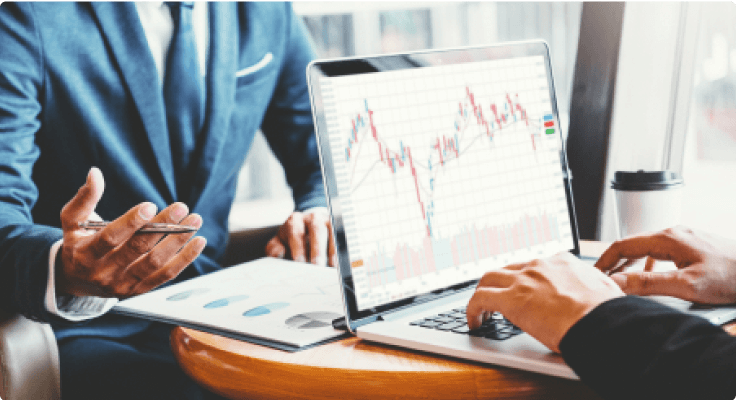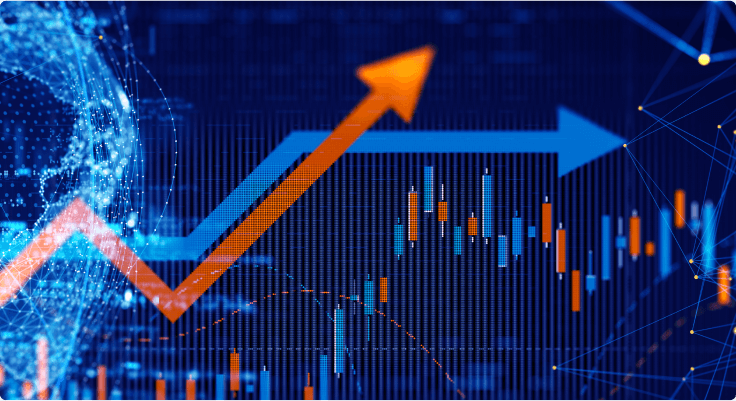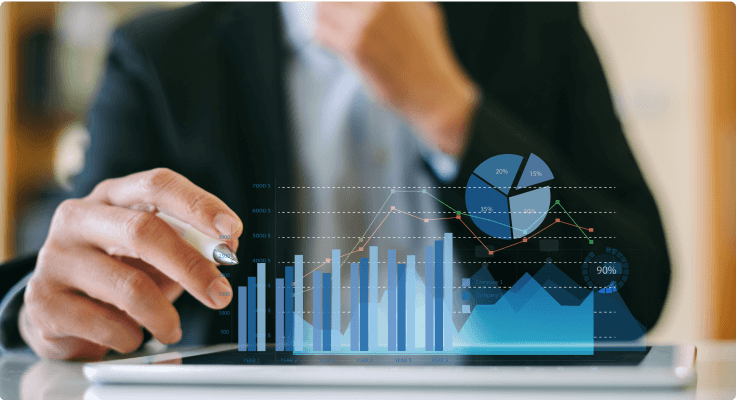If you had the chance to say one thing to yourself from 2 years ago, what would you say? Some might tell themselves about the Covid-19 pandemic, avid travellers might tell themselves to take that expensive dream holiday ASAP, others might tell themselves to stock up on masks and essentials. Experienced investors would skip all of that and tell themselves to buy gold immediately.
Spot gold reached US$2000/oz in a historic first on August 5, and proceeded to smash every record in the following days. By Aug 7, it had hit an intraday high of $2,072.50. At this point, it looks like nothing can dull the shine of this safe haven asset. But what caused its meteoric ascent?
All that glitters is Gold
Gold appears to be enjoying a confluence of positive factors that are contributing to its appeal and fuelling its demand.
“Gold typically does not trade in tandem with the stock market and often the two have a negative correlation,” says Scott Bauer, CEO of Prosper Trading Academy and author at OpenMarkets. “Gold is supposed to act as a safety net when markets decline and vice versa.”
Anecdotal evidence appears to confirm this. Since the start of the year, the S&P 500 index rose by 3.7%, and the Dow Jones Industrial Average (DJIA) declined 4%. Spot gold, on the other hand, rose 36.5% to its current highs.
That may just be one of the factors that contributed to gold’s rise. The Covid-19 pandemic has continued unabated, with new cases on the rise in the Americas, and the resurgence of the virus in territories like Australia and Hong Kong which had previously kept the virus in check. Concerns over the virus and the economic recession that followed, have driven more investors to the precious metal.
But that’s not all. The fall in interest rates have also been a major contributor to gold. Typically, since gold investments do not pay dividends or interest, its demand often declines against dividend-paying or interest-bearing investments.
The US Federal Reserve has effectively decided to keep borrowing rates near zero for the foreseeable future, with other central banks following suit. With interest rates at all-time lows, and 10year Treasury yields at historic lows of 0.6% as of July, the money is now back on gold.
The economic recession arising from the pandemic has also led to drastic expansionary measures in many major economies. Globally, central banks have flooded their markets with liquidity in a bid to boost consumption and economic activity.
At the same time, the prospects of rising inflation have weighed on investors’ minds, resulting in the flight to safety. What is interesting about the current gold rally, is that it has also raised the profile of silver – another safe haven asset.
“Gold itself has found good support after the sell-off in March. Long-term, many factors may support the precious metal and, by extension, should also help silver: the fiscal and monetary responses to COVID-19 are enormous on both sides of the Atlantic – and elsewhere in the world,” says Gregor Spilker, Director of Energy Products at CME Group.
“Inflation expectations are on the rise as the Fed is also indicating that it will allow overshooting the 2% inflation target should it help the economic recovery. That means that real yields, the opportunity costs of holding precious metals such as gold and silver, are at record low levels and should support future price rises.”
Increased volatility in the US dollar arising from strained Sino-US relations have also made the alternative safe haven currency a no-go.
How should investors trade gold now?
Gold can be traded in a number of ways. Buying gold bullion is the most direct form of gold investment, though it is costly and cumbersome to store and can be quite illiquid if you wanted to take profit quickly.
Investors could also invest in gold mining companies, though their value may not follow gold prices closely over a long term. Investing in mining companies also involves careful time-consuming due diligence, which may not be suited to some investors.
Some investors might also choose to invest in ETFs or mutual funds that are focused on gold. A key difference between the two is that ETFs can be bought and sold during market hours, while mutual funds can only be purchased after market close. Investors should also remember that both passive and actively managed funds can incur high costs from commissions or trading fees and should study the funds’ prospectuses carefully.
Investors who want to have control over their own investment would probably prefer to trade gold futures. While gold prices are high, gold futures traders could look for market corrections to enter the market, or trade the volatility through a series of short and long trades.
New futures investors can also consider starting small, by trading CME Group’s COMEX Micro Gold Futures (MGC). The MGC is designed to be a tenth the size of the 100oz Gold futures contract, and replicates the latter in tick size, depository locations, and termination of trading on the third last business day of the contract month.
According to CME Group, the MGC is “tailored to meet the demands of the active individual investor looking for the opportunity to trade physical gold in smaller increments, and for those seeking a less capital-intensive alternative to trading the largest and most liquid gold futures contract in the world.”
Here’s how the MGC performed in July.
* APAC hours represent 8 a.m.-8 p.m. SGT/HKT
The COMEX Gold market traded to all-time highs in early August 2020, and the active contract briefly traded through 2089.2 USD/oz. The settlement price for the active Dec contract of 2069.4 also hit the all-time high record.
COMEX Micro Gold Futures promotion
From now till the end of 2020, you can enjoy a US$1.50 commission promotion when you trade Micro Gold Futures with Phillip Futures. Trade the Micro Gold Futures contract (MGC) for just US$1.50 in commissions per side per lot. This promotion is also available for 4 other micro e-mini futures contracts including the CME Micro E-mini S&P 500 (MES) and the CME Micro E-mini Nasdaq-100 (MNQ). Learn more here.
To enjoy this promotion, you will need to be a Phillip Futures customer. Sign up for your trading account easily online here, receive your approval within a couple of working days and sign up for the US$1.50 promotion to get started.








